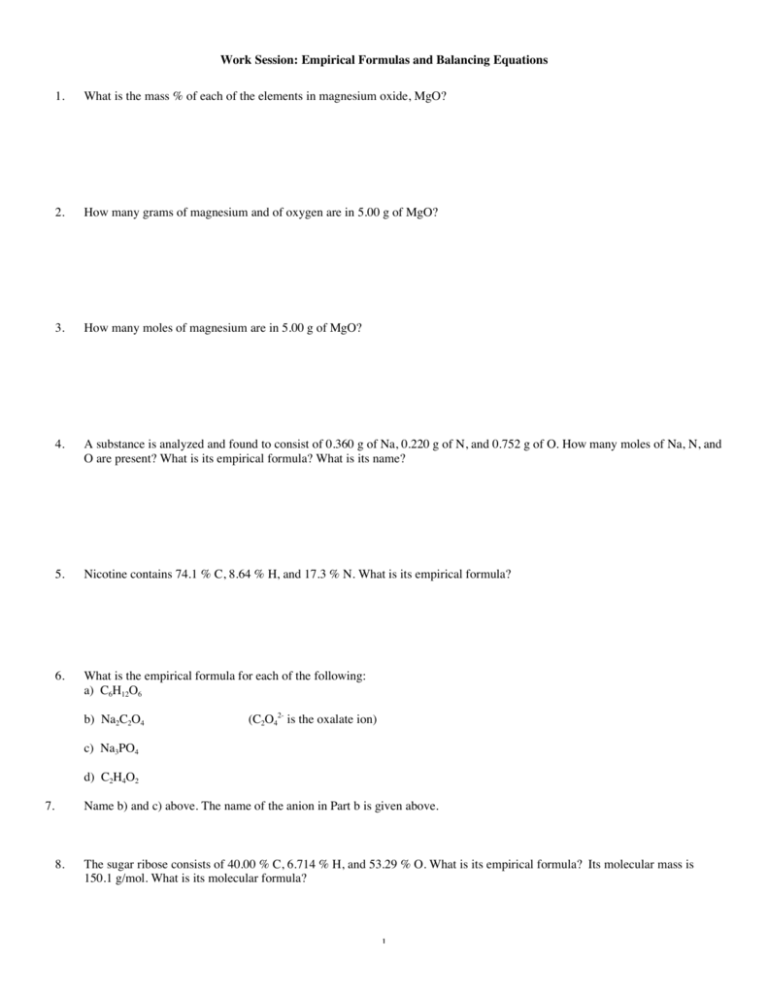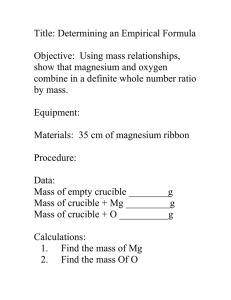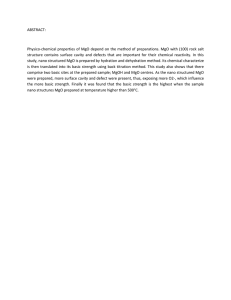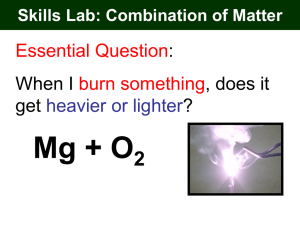3a, Emp Form, Bal Eqn
advertisement

Work Session: Empirical Formulas and Balancing Equations 1. What is the mass % of each of the elements in magnesium oxide, MgO? 2. How many grams of magnesium and of oxygen are in 5.00 g of MgO? 3. How many moles of magnesium are in 5.00 g of MgO? 4. A substance is analyzed and found to consist of 0.360 g of Na, 0.220 g of N, and 0.752 g of O. How many moles of Na, N, and O are present? What is its empirical formula? What is its name? 5. Nicotine contains 74.1 % C, 8.64 % H, and 17.3 % N. What is its empirical formula? 6. What is the empirical formula for each of the following: a) C6H12O6 b) Na2C2O4 (C2O42- is the oxalate ion) c) Na3PO4 d) C2H4O2 7. Name b) and c) above. The name of the anion in Part b is given above. 8. The sugar ribose consists of 40.00 % C, 6.714 % H, and 53.29 % O. What is its empirical formula? Its molecular mass is 150.1 g/mol. What is its molecular formula? 1 Name___________________________________________ Grade______ Date___________ 9. Write out the following statements in balanced chemical reactions. Specify states of matter for each substance. See question 10 for the proper placement of the state of matter parenthesis. Elements that exist as diatomic molecules are in work session 2a. Make sure you show them as diatomic when they appear as an element. a) sodium reacts with sulfur to form sodium sulfide b) aluminum combines with oxygen to form aluminum oxide c) show the reaction for iron(III) hydroxide forming from its constituent elements d) butane (C4H10) burns in oxygen to form carbon dioxide and water e) hydrogen reacts with chlorine to form gaseous hydrochloric acid f) solid TNT (C7H5N3O6) explodes on compression to form the gases carbon monoxide, nitrogen, and hydrogen, plus a small amount of elemental carbon 10. Balance each of the following equations. Name any ionic compounds in the reactions. a) ___ K2CrO4(aq) + ___ AgNO3(aq) → ___ Ag2CrO4(s) + ___ KNO3(aq) b) ___CH3OH(l) + ___O2(g) → ___CO2(g) + ___H2O(l) c) ___FeCl3(aq) + ___AgNO3(aq) → ___Fe(NO3)3(aq) + ___AgCl(s) d) ___Al(s) + ___S(s) + ___O2(g) → ___Al2(SO4)3(s) 2











